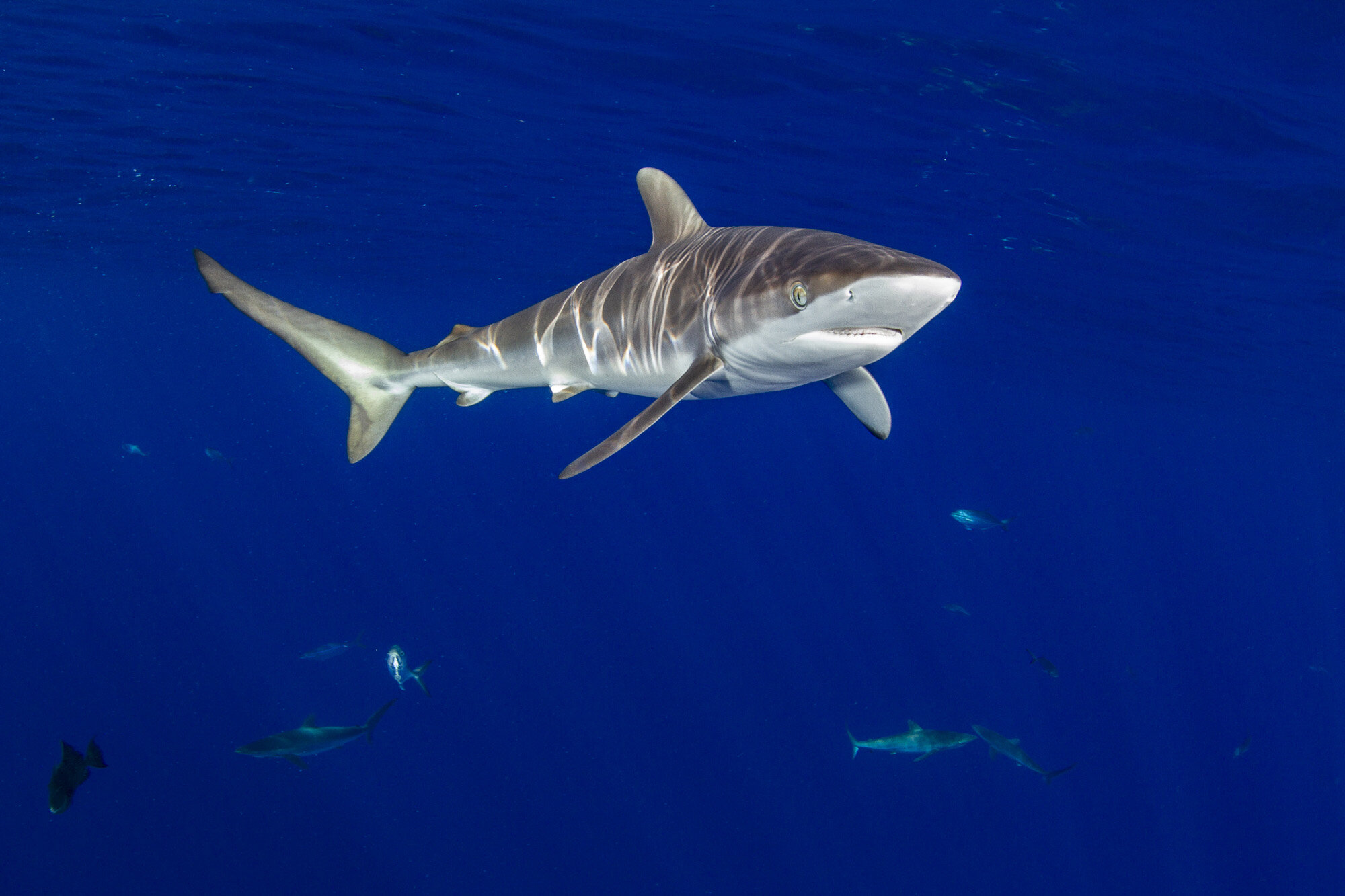Silky Sharks
THE BIOLOGY AND BEHAVIOR OF THE, Silky Shark, Carcharhinus falciformis IN THE WESTERN NORTH ATLANTIC
LOCATION: Andros Island, The Bahamas and Jupiter, Florida
Overview
Silky sharks are the second most harvested shark globally. It is a target or bycatch species in multiple fisheries, and as a result, rapid population declines have occurred in many regions. In the Atlantic Ocean, they were ranked as having the highest degree of vulnerability to exploitation and are currently managed as a single stock by the International Commission for the Conservation of Atlantic Tunas (ICCAT). Preliminary evidence from genetic analyses in the Gulf of Mexico and western North Atlantic suggests isolated populations and that females likely exhibit site fidelity to birthing sites. The lack of appropriate conservation and management measures could therefore increase the risk to smaller populations and lead to further depletion of silky sharks. Thus, there is an urgent need for concurrent and complimentary studies on movement and genetic structure to determine the extent of movements and connectivity of silky sharks in the U.S, The Bahamas and wider Caribbean. Furthermore, it is essential to identify key aggregation sites for the species (i.e. pupping or mating) as well as assess their reproductive behavior to confirm if they display philopatry to sites of parturition.
Conservation concern
The silky shark Carcharhinus falciformis is a highly mobile, oceanic species with circumtropical distribution. They are typically found in the epipelagic zone near the edge of continental and insular shelves in surface waters. Silky sharks are highly social, forming aggregations at submerged seamounts or under floating debris. The association of silky sharks with floating debris is very problematic as they co-occur with target species, such as bigeye tuna, Thunnus obesus, and aggregate under Fish Aggregating Devices (FADs), exposing them to purse seine and pelagic longline fishing. As a result, the silky shark is the second most harvested shark globally and represents 90% of shark bycatch in FAD fisheries (Gilman, 2011). The vulnerability to overfishing is concerning given the global proliferation in FAD usage, with nearly 100,000 FADs deployed each year (Moreno et al. 2016). This relentless fishing pressure has led to severe population reductions, with some estimates suggesting 95-98% over three generations. The species is assessed as vulnerable on the IUCN Redlist (IUCN, 2020) and was listed on CITES Appendix II (2016) to improve international trade regulation.
- PROJECT ONE -
SILKY Sharks of ANDROS ISLAND
LOCATION: Andros Island, The Bahamas
Research Questions
How do silky sharks across all life stages use the Tongue of the Ocean?
What role do silky sharks play in the pelagic food web?
What mechanisms underpin silky sharks social behavior?
How do social behavior and environmental parameters affect aggregation rates and habitat use nearby FADs?
Funding And Donors
Saving the Blue,. You can support this project by donating via the link found at the bottom of this page, or CLICK HERE
- PROJECT TWO -
SILKY Sharks of JUPITER INLET
LOCATION: Florida, USA
Research Questions
Determine the extent of movements and connectivity of silky sharks in the western North Atlantic.
Do silky sharks display site fidelity and residency to locations in the Bahamas and U.S.
Are there specific nursery or pupping grounds for the species?
Funding And Donors
Saving the Blue,. You can support this project by donating via the link found at the bottom of this page, or CLICK HERE
Donate and support silky shark research
Dr. Guttridge testing a novel tail-bend technique on a large juvenile silky shark to enable measurement and tissue sample collection without the use of hook and line.
A mature male silky shark restrained briefly for our team to equip a pop-off archival satellite tag (PSAT) in collaboration with scientists from the Cape Eleuthera Institute.
Silky sharks and mahi mahi aggregate under an ocean buoy moored at 1000m depth in the Tongue of the Ocean, Andros Island, The Bahamas.





